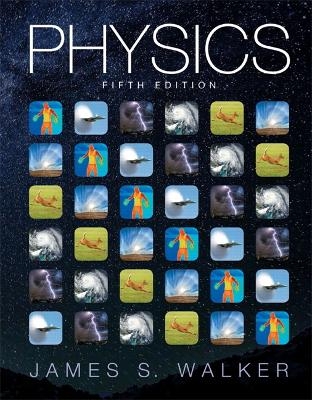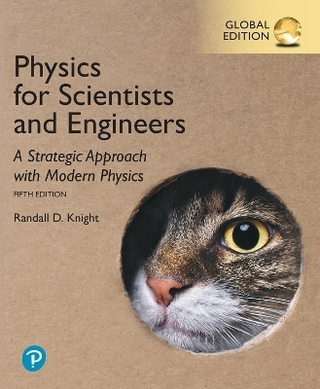
Radiative Processes in Astrophysics
Wiley-VCH Verlag GmbH (Hersteller)
978-3-527-61817-0 (ISBN)
- Keine Verlagsinformationen verfügbar
- Artikel merken
This clear, straightforward, and fundamental introduction is designed to present - from a physicist's point of view - radiation processes and their applications to astrophysical phenomena and space science. It covers such topics as radiative transfer theory, relativistic covariance and kinematics, bremsstrahlung radiation, synchrotron radiation, Compton scattering, some plasma effects, and radiative transitions in atoms. Discussion begins with first principles, physically motivating and deriving all results rather than merely presenting finished formulae. However, a reasonably good physics background (introductory quantum mechanics, intermediate electromagnetic theory, special relativity, and some statistical mechanics) is required.Much of this prerequisite material is provided by brief reviews, making the book a self-contained reference for workers in the field as well as the ideal text for senior or first-year graduate students of astronomy, astrophysics, and related physics courses. "Radiative Processes in Astrophysics" also contains about 75 problems, with solutions, illustrating applications of the material and methods for calculating results.
This important and integral section emphasizes physical intuition by presenting important results that are used throughout the main text; it is here that most of the practical astrophysical applications become apparent.
George B. Rybicki received his B.S. degree in physics from Carnegie-Mellon University and his Ph.D. in physics from Harvard University. He is a physicist at the Harvard-Smithsonian Center for Astrophysics and lecturer in the Astronomy Department at Harvard. His research interests include stellar atmospheres, stellar dynamics and radiative transfer. Alan P. Lightman received his A.B. degree in physics from Princeton University and his Ph.D. in theoretical physics from the California Institute of Technology. He was a research fellow at Cornell and then an Assistant Professor of Astronomy at Harvard University from 1976 1979. He is presently at the Harvard-Smithsonian Center for Astrophysics. His research includes work in general relativity, the astrophysics of black holes, radiation mechanisms, and stellar dynamics. He is also a coauthor of Problem Book in Relativity and Gravitation (1975).
Chapter 1Fundamentals of Radiative Transfer1.1 The Electromagnetic Spectrum; Elementary Properties of Radiation1.2 Radiative FluxMacroscopic Description of the Propagation of RadiationFlux from an Isotropic Source-The Inverse Square Law1.3 The Specific Intensity and Its MomentsDefinition of Specific Intensity or BrightnessNet Flux and Momentum FluxRadiative Energy DensityRadiation Pressure in an Enclosure Containing an Isotropic Radiation FieldConstancy of Specific Intensity Along Rays in Free SpaceProof of the Inverse Square Law for a Uniformly Bright Sphere1.4 Radiative TransferEmissionAbsorptionThe Radiative Transfer EquationOptical Depth and Source FunctionMean Free PathRadiation Force1.5 Thermal RadiationBlackbody RadiationKirchhoff's Law for Thermal EmissionThermodynamics of Blackbody RadiationThe Planck SpectrumProperties of the Planck LawCharacteristic Temperatures Related to Planck Spectrum1.6 The Einstein CoefficientsDefinition of CoefficientsRelations between Einstein CoefficientsAbsorption and Emission Coefficients in Terms of Einstein Coefficients1.7 Scattering Effects; Random WalksPure ScatteringCombined Scattering and Absorption1.8 Radiative DiffusionThe Rosseland ApproximationThe Eddington Approximation; Two-Stream ApproximationProblemsReferencesChapter 2Basic Theory of Radiation Fields2.1 Review of Maxwell's Equations2.2 Plane Electromagnetic Waves2.3 The Radiation Spectrum2.4 Polarization and Stokes Parameters 62Monochromatic WavesQuasi-monochromatic Waves2.5 Electromagnetic Potentials2.6 Applicability of Transfer Theory and the Geometrical Optics LimitProblemsReferencesChapter 3Radiation from Moving Charges3.1 Retarded Potentials of Single Moving Charges: The Lienard-Wiechart Potentials3.2 The Velocity and Radiation Fields3.3 Radiation from Nonrelativistic Systems of ParticlesLarmor's FormulaThe Dipole ApproximationThe General Multipole Expansion3.4 Thomson Scattering (Electron Scattering)3.5 Radiation Reaction3.6 Radiation from Harmonically Bound ParticlesUndriven Harmonically Bound ParticlesDriven Harmonically Bound ParticlesProblemsReferenceChapter 4Relativistic Covariance and Kinematics4.1 Review of Lorentz Transformations4.2 Four-Vectors4.3 Tensor Analysis4.4 Covariance of Electromagnetic Phenomena4.5 A Physical Understanding of Field Transformations 1294.6 Fields of a Uniformly Moving Charge4.7 Relativistic Mechanics and the Lorentz Four-Force4.8 Emission from Relativistic ParticlesTotal EmissionAngular Distribution of Emitted and Received Power4.9 Invariant Phase Volumes and Specific IntensityProblemsReferencesChapter 5Bremsstrahlung5.1 Emission from Single-Speed Electrons5.2 Thermal Bremsstrahlung Emission5.3 Thermal Bremsstrahlung (Free-Free) Absorption5.4 Relativistic BremsstrahlungProblemsReferencesChapter 6Synchrotron Radiation6.1 Total Emitted Power6.2 Spectrum of Synchrotron Radiation: A Qualitative Discussion6.3 Spectral Index for Power-Law Electron Distribution6.4 Spectrum and Polarization of Synchrotron Radiation: A Detailed Discussion6.5 Polarization of Synchrotron Radiation6.6 Transition from Cyclotron to Synchrotron Emission6.7 Distinction between Received and Emitted Power6.8 Synchrotron Self-Absorption6.9 The Impossibility of a Synchrotron Maser in VacuumProblemsReferencesChapter 7Compton Scattering7.1 Cross Section and Energy Transfer for the Fundamental ProcessScattering from Electrons at RestScattering from Electrons in Motion: Energy Transfer7.2 Inverse Compton Power for Single Scattering7.3 Inverse Compton Spectra for Single Scattering7.4 Energy Transfer for Repeated Scatterings in a Finite, Thermal Medium: The Compton Y Parameter7.5 Inverse Compton Spectra and Power for Repeated Scatterings by Relativistic Electrons of Small Optical Depth7.6 Repeated Scatterings by Nonrelativistic Electrons: The Kompaneets Equation7.7 Spectral Regimes for Repeated Scattering by Nonrelativistic ElectronsModified Blackbody Spectra; y"1Wien Spectra; y"1Unsaturated Comptonization with Soft Photon InputProblemsReferencesChapter 8Plasma Effects8.1 Dispersion in Cold, Isotropic PlasmaThe Plasma FrequencyGroup and Phase Velocity and the Index of Refraction8.2 Propagation Along a Magnetic Field; Faraday Rotation8.3 Plasma Effects in High-Energy Emission ProcessesCherenkov RadiationRazin EffectProblemsReferencesChapter 9Atomic Structure9.1 A Review of the Schrodinger Equation9.2 One Electron in a Central FieldWave FunctionsSpin9.3 Many-Electron SystemsStatistics: The Pauli PrincipleHartree-Fock Approximation: ConfigurationsThe Electrostatic Interaction; LS Coupling and Terms9.4 Perturbations, Level Splittings, and Term DiagramsEquivalent and Nonequivalent Electrons and Their Spectroscopic TermsParitySpin-Orbit CouplingZeeman EffectRole of the Nucleus; Hyperfine Structure9.5 Thermal Distribution of Energy Levels and IonizationThermal Equilibrium: Boltzmann Population of LevelsThe Saha EquationProblemsReferencesChapter 10Radiative Transitions10.1 Semi-Classical Theory of Radiative TransitionsThe Electromagnetic HamiltonianThe Transition Probability10.2 The Dipole Approximation10.3 Einstein Coefficients and Oscillator Strengths10.4 Selection Rules10.5 Transition RatesBound-Bound Transitions for HydrogenBound-Free Transitions (Continuous Absorption) for HydrogenRadiative Recombination - Milne RelationsThe Role of Coupling Schemes in the Determination of f Values10.6 Line Broadening MechanismsDoppler BroadeningNatural BroadeningCollisional BroadeningCombined Doppler and Lorentz ProfilesProblemsReferencesChapter 11Molecular Structure11.1 The Born-Oppenheimer Approximation: An Order of Magnitude Estimate of Energy Levels11.2 Electronic Binding of NucleiThe H2+ IonThe H2 Molecule11.3 Pure Rotation SpectraEnergy LevelsSelection Rules and Emission Frequencies11.4 Rotation-Vibration SpectraEnergy Levels and the Morse PotentialSelection Rules and Emission Frequencies11.5 Electronic-Rotational-Vibrational SpectraEnergy LevelsSelection Rules and Emission FrequenciesProblemsReferencesSolutionsIndex
| Verlagsort | Weinheim |
|---|---|
| Sprache | englisch |
| Maße | 170 x 241 mm |
| Gewicht | 764 g |
| Themenwelt | Naturwissenschaften ► Physik / Astronomie |
| ISBN-10 | 3-527-61817-1 / 3527618171 |
| ISBN-13 | 978-3-527-61817-0 / 9783527618170 |
| Zustand | Neuware |
| Haben Sie eine Frage zum Produkt? |
aus dem Bereich


